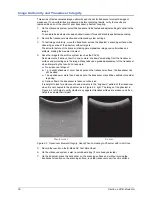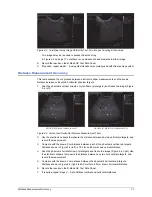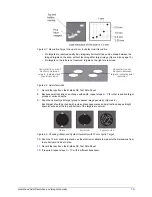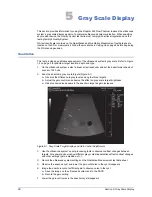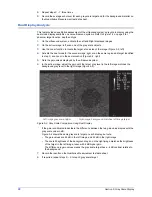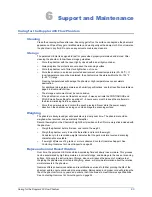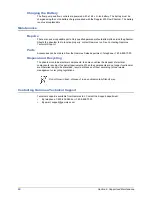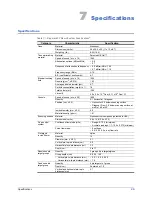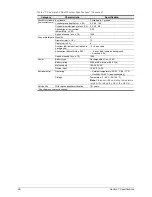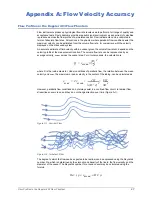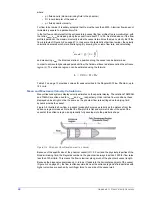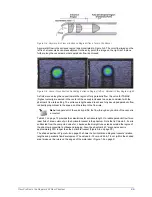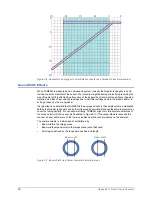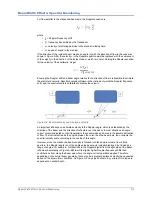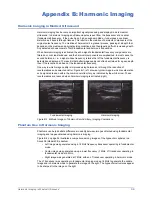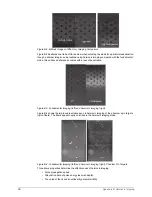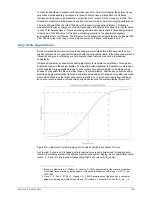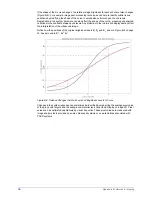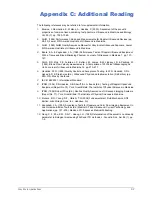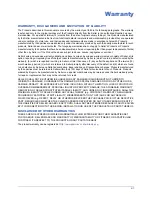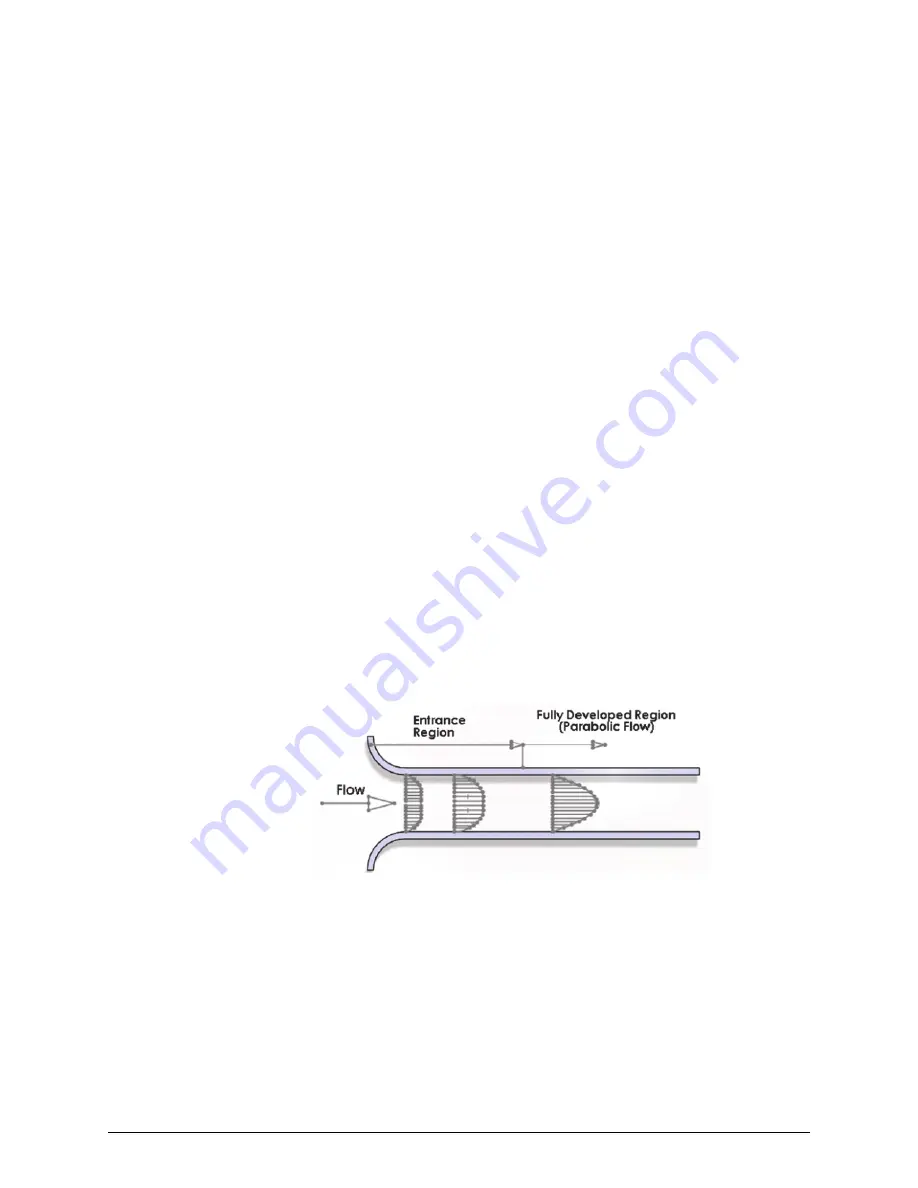
28
Appendix A: Flow Velocity Accuracy
where
•
ρ
= fluid density (blood-mimicking fluid in the phantom)
• D = inner diameter of the vessel
• µ = fluid dynamic viscosity
For flow to be laminar it is widely accepted that
Re
must be less than 2300. A laminar flow does not
immediately equate to a parabolic profile.
In the first few centimeters after the entrance into a vessel the flow profile often is more blunted, with
the ratio v
mean/
v
max
decreasing along the vessel from about 0.7 to 0.5. As stated above, if the flow
profile is parabolic, the maximum velocity inside the vessel is two times the mean velocity. But if the
flow is turbulent (Figure A-2 on page 27), or has some characteristic other than laminar, the velocity
calculation becomes much more challenging. By knowing the volume flow rate, and calculating
and measuring v
max
, the bluntness ratio at a position along the vessel can be determined.
In order to achieve fully developed parabolic flow, the fluid must travel a distance called the
entrance
region
(
L)
. The entrance region
L
can be estimated using the formula:
Table 3-1 on page 13 provides
L
values for peak velocities in the Doppler 403 Flow Phantom, up to
122 cm/s.
Mean and Maximum Velocity Calculations
Many ultrasound systems display velocity estimates on the spectral display. The notations TAMEAN
and TAMAX are often used for v
mean
and v
max
, respectively. Under certain flow conditions, these
displayed values might not be the same as the phantom flow rate settings due to varying fluid
dynamics inside the vessel.
Figure A-3 illustrates how flow in a vessel gradually becomes parabolic as the distance from the
entrance region increases. Note that the flow profile is flat and symmetric about the axis of the
vessel at the entrance region, and gradually fully develops into the parabolic shape.
Figure A-3. Parabolic Flow Development in a Vessel
Because of the specific size of the phantom vessel (ID = 0.5 cm) and the physical properties of the
blood-mimicking fluid, the Reynolds number in the phantom is always less than 2000 for flow rates
less than 720 ml/min. This means the flow is laminar along much of the phantom’s vessel length.
Because the diagonal vessel makes a U-turn as it feeds into the horizontal segment of the vessel
(Figure A-4 on page 29), the flow is often asymmetric near the entrance region as fluid particles with
higher velocities are pushed by centrifugal force to one side of the vessel wall.
v
mean
Q
D
4
----
2
=
L
0.06 D
Re
=



